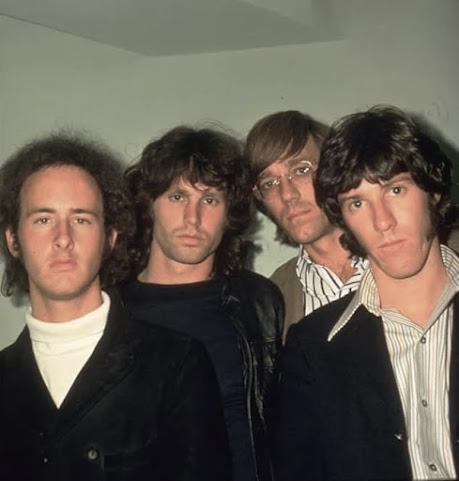THE DOORS’ “TAKE IT AS IT COMES” DESERVES MORE APPRICIATION, HERE’S WHY
Throughout the first half of 1966, as The Doors matured artistically,
they developed several songs that would later appear on their first two albums.
Among these compositions, many of which originated from Jim Morrison's ideas and lyrics, was "Take It As It Comes" (link here).
This tune was refined during the band's residency at the Whisky a Go Go
in Los Angeles in the summer of 1966, shortly before the recording of their
debut album ("The Doors", recorded in August 1966 and released in
January 1967).
Despite its excellent quality, this rock song with a classic structure
(verse–chorus–solo – verse–chorus–solo – verse–chorus) is often not given the
musical prominence it deserves.
So, let's examine its main musical features and characteristics.
The bass line is duplicated by two different instruments. The first is
Ray Manzarek's Fender Rhodes Piano Bass, a small keyboard which the musician
played with his left hand to imitate the sound of the bass.
The second bass line is played by session musician Larry Knechtel on the
electric bass. Knechtel contributed to a number of notable and influential
recordings in the 1960s. These include The Byrds' "Mr. Tambourine
Man" (single, 1965), The Beach Boys' "Pet Sounds" (album, 1966),
Simon and Garfunkel's "Sounds of Silence" (album, 1966), and The
Mamas & the Papas' "Deliver" (album, 1967), among others.
The duplicated bass line is clearly audible from min. 1:27 to min. 1:45,
during which time the mood of the piece drops in sound intensity for a brief
passage corresponding to the final verse.
The two rhythmic instruments overlap for the rest of the song, creating
a dark, dense backdrop against which the high notes of Manzarek's electric
organ stand out.
This fascinating sound contrast, which remains consistent throughout the
composition, significantly defines the profile of the instrumental section.
Robby Krieger's moderately distorted electric guitar, accompanied by a
thin reverb, provides a vibrant rhythmic accompaniment.
There are two solos on 'Take It As It Comes', both of equal length and
played on the electric organ by Manzarek.
They are brief and fast, conceived in an original way and slightly
spiced with a vaguely Indian flavor, which was popular in British and American
rock and pop-rock at the time.
Finally, of course, there is the voice of Jim Morrison, who, at this
early stage in The Doors' career, had almost reached the peak of his vocal
abilities (a peak that would be definitively reached with the next LP:
"Strange Days", released in September 1967).
The fascinating vocal part is appropriately doubled in the choruses,
creating an even greater and more convincing effect.
The lyrics of "Take It As It Comes" were inspired by the only
Transcendental Meditation class Morrison tried at the Maharishi Mahesh Yogi
Centre in Los Angeles towards the end of 1965.
This happened at the suggestion of Densmore and Krieger, who were unsuccessfully
attempting to steer the singer away from his profound metaphysical quest with
LSD.
The lyrics of this charming composition succinctly outline a philosophy
of life, the initial thrust of which, as mentioned above, comes from Indian
meditation, which was practiced by many Californian artists at the time.
The events of our existence cause us to exhibit different moods and behaviors.
In this constant flow of change, we should not act with distress and agitation
but rather accept things as they come and let go of what might otherwise affect
us negatively.
"Take It As It Comes" is an important chapter in the early development
of rock music, a genre that was born only a year earlier and found a high-level
channel of expression here.
P.S.: My book "The Doors Through Strange Days"- The most comprehensive journey ever made through The Doors' second LP, is available on Amazon.com, .uk, .mx, .it, etc.
Here’s a link:




Is "Take It As it Comes" on a CD, or DVD album?
ReplyDeleteHi, it's on Cd, vinyl and every other support that incluedes thei first album "The Doors"
Delete